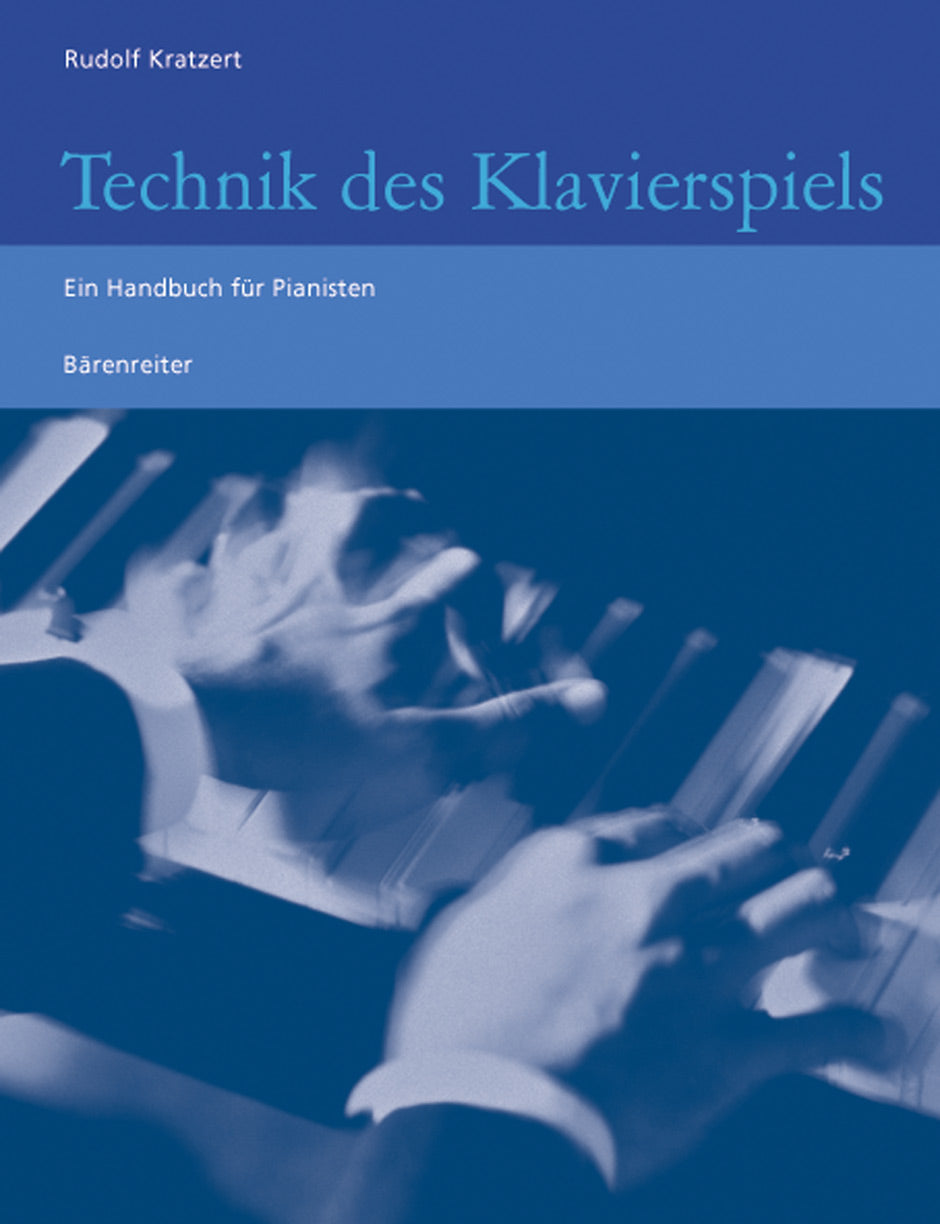Technik des Klavierspiels
Ein Handbuch für Pianisten
In stock and typically ships within 1 business day.
- Author: Rudolf Kratzert
- Language: German
- ISMN:
- Size: 9.1 x 11.8 inches
- Pages: 284
Ausführliches and konkurrenzloses Grundlagenwerk zur Klaviertechnik für Anfänger, Fortgeschrittene and Profis. Rudolf Kratzert schließt eine große Lücke im Bereich der Fachliteratur für Pianisten. Erstmals seit Jahrzehnten werden in einem Band alle klaviertechnischen Fragen angesprochen and präzise beantwortet. Der umfangreiche and großformatige Band eignet sich als Grundlage spieltechnischer Übungen für alle angehenden and ausgebildeten Pianisten and Klavierlehrer. Nach einer Einführung in vor-pianistische Aspekte untergliedert sich der Hauptteil des Bandes in die Abschnitte „Grundlagen der Klaviertechnik", „Klaviertechnik für Fortgeschrittene" and „Professionelle Klaviertechnik". Zu den angesprochenen Themen gehören beispielsweise das Sitzen am Klavier, Pedaltechniken, Daumenuntersatz, große Griffe, Ornamentik, schnelle Doppelgriff-Passagen, schwierige Sprünge etc. Auch der Technik des Klavierübens and des pianistischen Vortrags sind eigene Abschnitte gewidmet. Mit fast 300 Notenbeispielen, über 30 Abbildungen, zahlreichen Übungen and Experimenten mit and ohne Klavier werden alle Fragestellungen anschaulich dargestellt. Der Pianist Rudolf Kratzert wurde 1946 in Heidelberg geboren. Er studierte bei Gerhard Puchelt and Walter Kamlet and war unter anderem als Dozent für Methodik des Klavierspiels an der Musikakademie Kassel tätig. Derzeit ist er konzertierend and freiberuflich lehrend tätig, u. a. in zahlreichen Hochschulkursen. Spezialisiert hat er sich auf dem Gebiet der Alexander-Technik.
Publishers use a lot of words to describe what they sell, and we know it can be confusing. We've tried to be as clear as possible to make sure you get exactly what you are looking for. Below are descriptions of the terms that we use to describe the various formats that music often comes in.
Choral Score
A score for vocalists that only contains the vocal lines. The instrumental parts are not there for reference. Generally, cheaper than a vocal score and requires multiple copies for purchase.
Facsimile
Reproductions of the original hand-written scores from the composer.
Full Score
For ensemble music, this indicates that the edition contains all parts on a single system (there are not separate parts for each player). In larger ensembles, this is for the conductor.
Hardcover
Hardbound. Generally either linen-covered or half-leather.
Orchestral Parts
Similar to a wind set, this is a collection of parts. In the case of strings, the numbers listed are the number of copies included, though generally these are available individually (often with minimum quantities required).
Paperback
When publishers offer multiple bindings (e.g. hardcover) or study scores, this is the "standard" version. If you're planning to play the music, this is probably what you want.
Performance / Playing Score
A score of the music containing all parts on one system, intended for players to share. There are not separate parts for each player.
Set of Parts
For ensemble music, this indicates that there are separate individual parts for each player.
Solo Part with Piano Reduction
For solo pieces with orchestra, this is a version that contains a piano reduction of the orchestra parts. For piano pieces, two copies are typically needed for performance.
Study Score
A small (think choral size) copy of the complete score meant for studying, and not playing. They make great add-ons when learning concertos and small chamber works.
Vocal Score
A score prepared for vocalists that includes the piano/organ part or a reduction of the instrumental parts.
Wind Set
For orchestral music, this is a collection of wind and percussion parts. The specific quantities of each instrument are notated.
With Audio
In addition to the printed music, the edition contains recordings of the pieces. This may be an included CD, or access to files on the internet.
With / Without Fingering (Markings)
Some publishers prepare two copies - a pure Urtext edition that includes no fingering (or bowing) suggestions and a lightly edited version that includes a minimal number of editorial markings.



